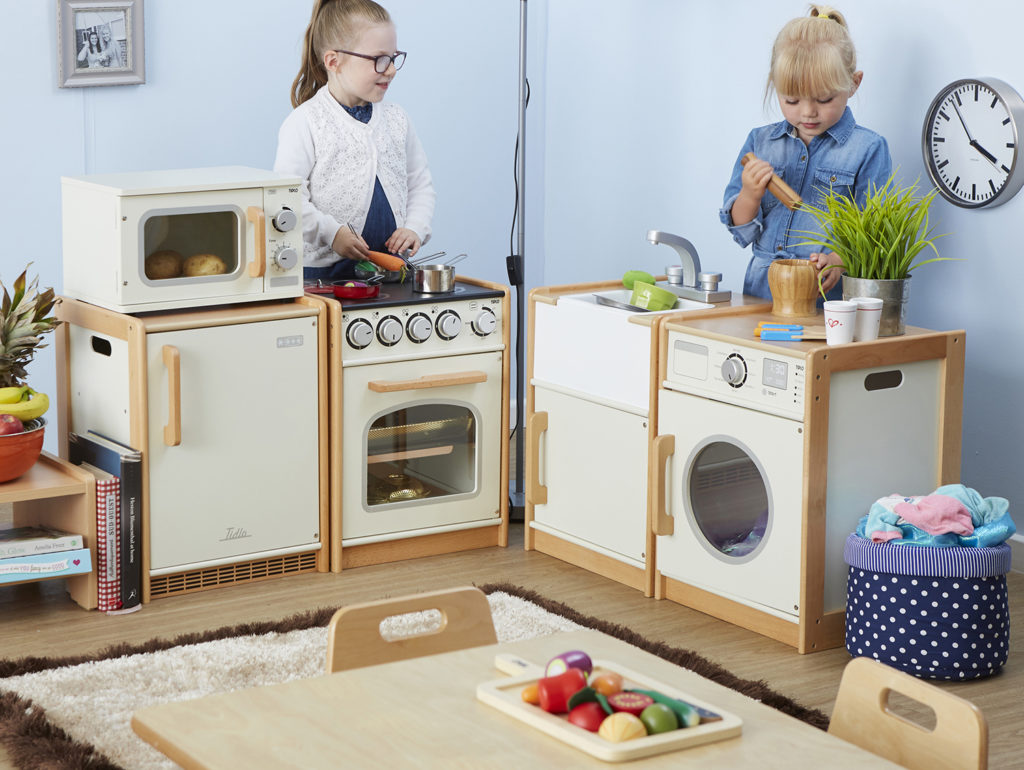Actually, I would implore you to stop and think a little before you sweep clean with your new broom. The EYFS clearly states, quite rightly, that young children learn best with what they know – and that means in our settings as well as at home. It is vital that we think about the transition from home to setting at the start of each half term with as much thought as we do the “big transitions” to school or another class. Our children have been away from us for up to 3 weeks. To a small child that is a VERY long time and much of what they were comfortable with in our classrooms and nurseries will now feel new and unfamiliar again. It’s really important not to change too much before the children come back so that they can resettle into the surrounding that once felt safe and comfortable.
Your first week back in the Early Years really needs to focus on resettling the children and to re-engaging with them as individuals. They will have lots of tales to tell – of adventures they have been on and people they have seen whilst away from you – and it is very important that we as practitioners set aside time to listen to these experiences (and not just try and get them to write a sentence about them). If you have had an amazing break, seen magical things and met marvellous people, how depressing would it be if in the middle of retelling your adventures to your audience you were stopped in your tracks and told to “write about it”? By giving children the space and time to simply talk about their experiences, we are not avoiding learning (as some may have you believe), but we are building their self-esteem and their confidence as well as their communication and language abilities; not to mention covering the bit in “Understanding the World” about children recounting key events in their lives -it doesn’t say to write key events… just recall.
The idea of not changing everything actually links in well with why I personally think we should keep a home play area in our Early Year’s settings at all times. I passionately believe there is no need to keep reinventing our role play areas as a space station or a garden centre or even a travel agent! (When was the last time anyone went and booked a holiday at a travel agent? Let alone with their children!) ‘Characteristics of Effective Learning’ clearly states that children’s learning starts with the familiar and builds from there. Having a role play area that clearly reflects the children’s own experiences of home is much more powerful in offering opportunities for maths, literacy and for communication and social development. Maybe what we should be doing is reflecting how our homes change throughout the year instead of trying to develop artificial play situations which will excite for minutes if we are lucky before children resort back to what they know and take baby to sleep in the space station or begin to cook a cake in the garden centre.
A role play area which has been enhanced for Christmas, Hanukkah or Thanksgiving can be changed slowly, with the help of the children, as we move into spring, perhaps adding spring cleaning equipment and flowers as we transition forward with the year. In being part of taking down the Christmas decorations children will see the impact of festivals and culture on everyday life and feel engaged and involved. Adding real-life experiences to your home area throughout the year will give children the chance to feel more at home, to re-enact familiar situations and to build on their existing understanding. Try to make your home corner look as much like a real home as possible by adding: real packets, magazines, cookbooks, books, calendars and newspapers for text, real food tins and even fruit and veg for maths (exploration of size, shape and weight), teacups, saucers and authentic objects such as clocks, lampshades, plants, remote controls and mobile phones. Whatever we have in our homes that children use, we should give them a chance to relive through play in our settings.
So step away from the shiny and the new this new year and give children the homely, supportive smooth transition back into our settings they deserve. Look for the potential to learn through familiar play rather than forcing artificial activities and situations on our children.
With thanks to Kirstine Beeley for writing this post. Kirstine is an experienced primary school teacher who now works as an author and Early Years consultant.



